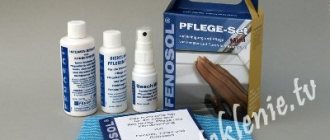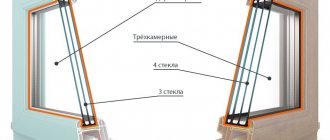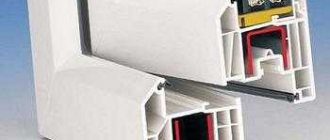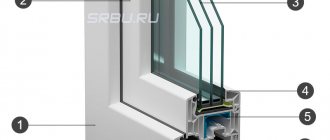After installing PVC windows, many people forget that it is necessary to carry out maintenance of fittings and seals.
For this purpose, special lubricants or their analogues are used, which prevent rapid wear of window elements.
Therefore, we will consider whether it is possible to lubricate windows, which parts of it need it, types of lubricants, and also how to carry out the treatment correctly.
Is this necessary and why?
During operation, the plastic window will open many times, which leads to dust getting into the fitting mechanism. Due to its accumulation, the lubricant begins to thicken and then completely wear off. Such a mass acquires an abrasive effect (for example, like the surface of sandpaper), since due to increased friction metal shavings begin to get into the oil.
The consequences of this effect can lead to accelerated wear of window parts, as well as the appearance of squeaks, clicks or rattles. Also, due to a lack of lubrication, the moving parts of the fittings will begin to work less smoothly, and the seal will be less resistant to temperature changes and will begin to let in cold air.
In order for the window mechanism to last longer and wear less, it is necessary to lubricate:
hinges on the sashes, since this is a moving part that will quickly wear out due to excess friction;- a locking mechanism (on the sash and impost), which at the moment of opening also rubs metal against metal, which will cause accelerated wear;
- rubber bands of the seal to improve its protection against temperature changes, as well as reduce stretching when the doors are closed (the rubber bands rub and press together).
If you do this in a timely manner, then:
- the wear resistance of moving parts increases, as well as those that can rub when the sash moves;
- the locking mechanism and hinges will not make unnecessary sounds;
- the opening process will be smoother;
- improved corrosion protection;
- the seal will remain elastic and will not begin to crack or stretch.
When and how often?
On average, window parts should be lubricated 1-2 times a year, most often at the end of spring or early summer, and also in the fall. But the frequency of processing is influenced by several factors:
- if there are roads, construction sites, industrial enterprises or other objects near the house that can generate excess dust, then the oil will wash off faster;
- climatic conditions under which dust storms occur;
- frequent opening of windows in the warm season.
Given such factors, it is recommended to carry out cleaning and subsequent lubrication 3-4 times a year.
On a note. It is recommended to carry out the procedure at positive temperatures (at least + 10-15 °C), since lower temperatures will impair the spread of oil through the mechanism.
If extraneous sounds appear (creaks, rattles, clicks), the lubrication process should be carried out without delaying it until the appropriate time.
What happens if you don't lubricate?
Any lubricant dries out over time, which leads to mechanical overload of the metal moving elements of the fittings. The additional load itself significantly reduces the service life of the mechanisms, not to mention the fact that non-lubricated elements are subjected to this load. Various kinds of particles accumulate in the grooves of the frame and sashes, including sand and metal dust (appears during prolonged operation of the fittings). These materials are abrasives and do not have the best effect on the performance of the mechanisms and the window as a whole.
The service life of rubber seals is about seven years. In hot, dry climates, rubber and polymer materials lose the necessary elasticity even earlier. Without treatment, the rubber quickly becomes rough and cracks, the tightness of the sashes in the closed position becomes insufficient, as do the energy-saving characteristics of the window unit.
Sources
- https://1oknn.ru/silikonovaya-smazka-dlya-okon.html
- https://HoroshijPotolok.ru/otdelka/smazka-furnitury-plastikovyh-okon-vidy-metody-rekomendacii.html
- https://DomZastroika.ru/okna/plastikovie/chem-i-kak-pravilno-smazat-plastikovye-okna.html
- https://balkon4life.ru/osteklenie/furnitura/smazka/.html
- https://stroyday.ru/remont-kvartiry/okna-i-dveri/smazka-plastikovyx-okon-svoimi-rukami.html
What lubricant is best to treat mechanisms?
To process the mechanisms of PVC structures, the following are used:
Special sets
Special kits for windows , which include silicone-based lubricant.
During treatment with this product, a thin protective film is formed on the metal surface, which has high strength (it takes a long time to wear off), reduces friction, and also prevents corrosion.
Most often presented in the form of a spray bottle or tube. For example, the set includes lubricant for fittings and seals, as well as detergent for PVC profiles (RUR 220 per set).
Some types of specialized lubricants do not contain silicone, for example, Weicon. A 200 ml container with an oil or Teflon based composition, which is designed to lubricate the moving parts of the window. Average cost 1300 RUR/piece.
Silicone lubricants
Universal silicone lubricants , which are used for processing moving metal parts, for example, in cars, door structures, and bicycles.
Most often it is presented in the form of a spray, but sometimes it can also be in tubes or bottles. The advantage of this product is that it is easier to find, and its cost is lower than that of a professional window lubricant. Among the representatives are WD-40 Specialist (270 rubles for a 200 ml spray) and Fill inn (140 ml aerosol for 130 rubles).
Sewing machine oil
Special sewing machine oil can also be used to lubricate the moving parts of the window. Such a product will have a shorter service life, but can also prevent wear of the mechanism. Oil for sewing machines is most often presented in the form of a small plastic bottle or aerosol.
Some types of such lubricants are made from Teflon (similar to well-refined machine oil). For example, the Hobby company supplies Cinderella oil, which is used for power tools and sewing machines (50 ml for 60 rubles), and the Weicon company supplies Teflon lubricant in the form of a spray (400 ml for 1500 rubles).
Mineral or synthetic lubricant
In extreme cases, you can use any mineral or synthetic lubricant that does not have abrasive components, acid, solvent, or other aggressive substances. Such oils are suitable for short-term treatment of moving parts, since most often they have a too fluid texture.
The packaging should also indicate that this type of lubricant is harmless to rubber or plastic. Diesel engine oil or window spindle lubricant are not suitable as they are too thin.
What to choose for rubber seals?
To lubricate rubber seals, special products are used, which are found in window care kits (can be sold separately) or technical silicone lubricants. For example:
- A specialized set from Fenosol, called Fenoflex, includes a sealant care product. The cost of the set is 850-900 rubles.
- Technical silicone from Sinicon is presented in the form of a 250 g tube for 250 rubles.
In some cases, to lubricate the seal, you can use the same silicone-based oil that is used to treat moving mechanisms.
Advice. As a last resort, it allows the use of pure glycerin without any cosmetic additives.
Why not?
It is not recommended to use:
- Oils based on animal fats, as well as vegetable ones. This product can only be used as a last resort and for a short period of time, since over time it begins to thicken and also attract dust or dirt. This leads to the fact that the surface of the mechanism will be covered with an abrasive mass, due to which rapid wear of parts will occur.
- Products containing aggressive substances (acids, solvents) can destroy the protective layer on the metal, which prevents corrosion, causing the surface of the parts to begin to rust and wear off.
- Automotive oils. They have a too liquid base, as well as insufficient purity. This lubricant absorbs dust faster and wears off.
- Vaseline, creams, gels and other improvised means are also not suitable for treating PVC windows.
In some cases, Vaseline can be used to lubricate the seal, but it does not tolerate temperature changes very well, which is why it will have to be renewed frequently. Other cosmetics, after drying, leave a sedimentary layer that can damage the moving parts of the fittings and also lead to the destruction of the seal.
Other preventive measures with plastic windows
During lubrication of windows, or rather, before it begins, it is advisable to treat plastic profiles with antistatic agents. The result will be felt immediately - there will be less dust and dirt on the frame and sashes.
Our portal is faced with the fact that it is not always possible to carry out repairs according to our instructions. We are receiving requests for help in choosing a reliable contractor. We contacted several companies in Moscow. The Relit company, with 22 years of experience, has won our trust: a permanent office on Basmannaya, a spare parts warehouse, experienced craftsmen, a separate manager for each order. There are many positive reviews from clients: they work quickly, carefully, and do not impose unnecessary things. Using the code word STROYGUR there is a 5% discount. Tel.: +7 (495) 023-14-23 (website). PS Dear site visitors, we value our own reputation very much. Therefore, for a long time we did not work with direct advertisers - we were not sure of their integrity. This is the first company that was able to convince the site team that their advertising will not compromise our portal.
Tools and materials
For work you may need:
syringe;- lint-free cloth or sponge;
- a hard bristle brush or toothbrush;
- window cleaner (no solvents or abrasives);
- oil for hinges and fittings;
- seal lubricant;
- paper towels;
- soap solution.
How to coat a PVC structure yourself?
In order to lubricate the PVC structure you need:
- open the window sashes and pre-clean the locking mechanism with a clean napkin or toothbrush (for hard-to-reach places);
- apply lubricant to metal parts: spray from a bottle or carefully pour 2-3 drops from a syringe onto each part;
- Avoid getting oil on the rubber seals, and remove excess with napkins or paper towels;
- it is necessary to lubricate the locking mechanism in different positions of the closing handle, since all parts of the device will be treated in this way;
- Using a soap solution or window cleaner, clean the rubber seal and wipe it dry;
- if a spray is used for lubrication, then it is necessary to apply it from a short distance, and then gently rub it with a napkin over the entire seal;
- if the rubber surface has two petals, then you need to start lubricating the inner part first, and then the outer part;
- If you are not using an aerosol, you can apply the lubricant with your hands, a napkin or a brush.
Video on how to maintain plastic windows and lubricate fittings and seals:
Causes
The causes of whistling may be the following:
- Air entry into drain. This sound will occur due to air movement through the frame. In order to eliminate it, it is necessary to manipulate the gasket, which should absorb sound;
- Correct installation of the window. The best way to check this is to use a level. Pay attention to its flexibility. To do this, open the sash slightly and evaluate how tightly the jumpers fit. If they can be easily shaken, then this indicator is unnecessary. To remove the whistling caused by this reason, the entire structure should be redone;
- The occurrence of a pressure difference inside and outside the room. To eliminate this problem, you should correct the condition of the seal inside;
- Some of the sealing material could remain between the frame and the slope, which could also cause an unpleasant sound. In this case, you should remove it very carefully;
- Carefully examine the position of the seal in each corner. Perhaps the sound is caused by a small gap between it;
- Sometimes chips left in the drainage hole may whistle;
- There was also a situation in which the whistle was caused not by a plastic window, but by a pipe that was located not far from the glass. The noise arose only with a very strong gust of air;
- Note the different valves. Whistling can occur when air flows through them at high speeds.
Difficulties and errors
When lubricating a double-glazed window, the following difficulties and errors may occur:
- If you do not remove the old grease, dust, dirt or metal shavings from the surface of the parts, the new lubricant will not have any effect, since it will wear off very quickly and can also become clogged in the mechanism, which will disrupt its operation.
- When using aerosols, an air suspension is formed, which will fall not only on the metal, but also on other parts of the window, which is why it will have to be wiped off.
- You should carefully select the material with which the window will be lubricated. To do this, you need to carefully read the label, as it may indicate restrictions and side effects, as well as the composition. Lubricants with aggressive substances and abrasive components can destroy the metal, plastic or rubber part of the window.
Let us consider in detail the last two points.
In a previously published article entitled “”, all the components of this light-transmitting solution were described in detail. Let us briefly recall that a double-glazed window includes several glasses that form chambers and are separated by a spacer frame. The space in the chambers of a double-glazed window is filled either with inert gas (a more expensive version of windows) or with dry air (the most popular due to the optimal price/quality ratio). At the joints, to ensure the tightness of the structure, the chambers are sealed with a special substance.
Due to the impact of environmental manifestations on the glass unit, such as a sharp jump in atmospheric pressure or a change in temperature values, mechanical stresses are likely to occur on the glass, which is one of the reasons why the glass unit burst.
Consequences of no treatment
Important! If you do not lubricate the fittings, then over time it will become clogged with dust, the oil will thicken, and the surface of the metal will begin to wear off, forming metal shavings.
This will cause unpleasant squeaks or rattles, the window will be more difficult to open/close, and the locking mechanism may also jam. In some cases, the sash may become skewed or not fit tightly, which will result in poor thermal efficiency and sound insulation.
Seals that are not lubricated will gradually wear out or become deformed. Under the influence of the external environment and pressure, they will begin to lose elasticity, which is why they may crack or become hard. This will lead to the window no longer closing tightly (or closing at all), as well as the formation of drafts and cold bridges, which will reduce thermal efficiency and sound insulation.











